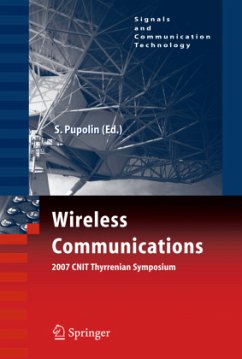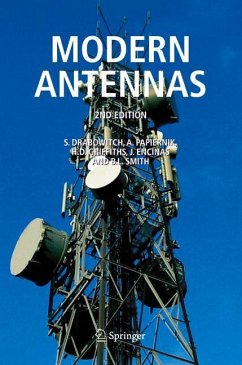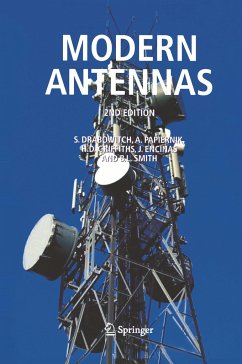
Radiolocation in Ubiquitous Wireless Communication
Versandkostenfrei!
Versandfertig in 6-10 Tagen
76,99 €
inkl. MwSt.
Weitere Ausgaben:

PAYBACK Punkte
38 °P sammeln!
The subject of the book is application of multi-antenna radiolocation to the environment of fast, ubiquitous wireless communication among portable devices. It is a systematic presentation of the author's research and development in the field, within the 802.11b standard, while explaining the general principles and exploring applications to other standards and situations. The purpose is to fill a gap in the current technical literature and present the issues involved in locating mobile wireless network agents, in a single volume, accessible to system designers and other practitioners in the wireless field.
Thisvolumehasitsbeginningsinalaboratoryproject,developmentofaradiolocator for the Wi-Fi network that was growing by leaps and bounds on the campus of Indiana University at that time. What started as a very focused and practical attempt to improve network management, touched in its lifetime upon broader issues of the use of radio spectrum, design of system architectures for the wireless medium, and image formation outside the limits of geometrical optics. Ihaveintendedthisbookmostlyfortheaudienceofengineersandsystemdesi- ers, in the growing ?eld of radio communication among small, portable, ubiquitous devices that have become hybrid platforms for personal communication and p- sonal computing. It is also a book addressed to network professionals, people to whom radio is largely a black box, a medium that they usually rely upon, but s- dom fully understand. In fact, in the course of my work in the ?eld, I have witnessed, to my dismay, a wide disconnect between the networking world and the radio technology that n- working has come to depend upon so heavily. Perhaps, because digital wireless communication is seen as digital ?rst and wireless second, there is often a m- placed emphasis on its information-processingside, with the methodologycentered around the discrete symbol, and with little intuition of the underlying physics. I had it once suggested to me, in apparent seriousness, to use radio cards for intra-system communication within a radiolocator! Wireless communication is radio, plain and simple.














